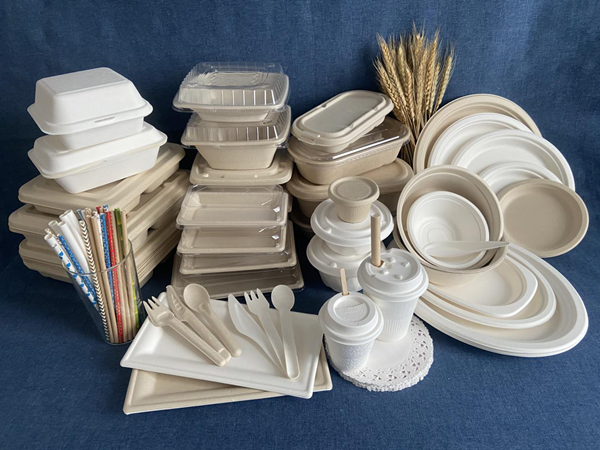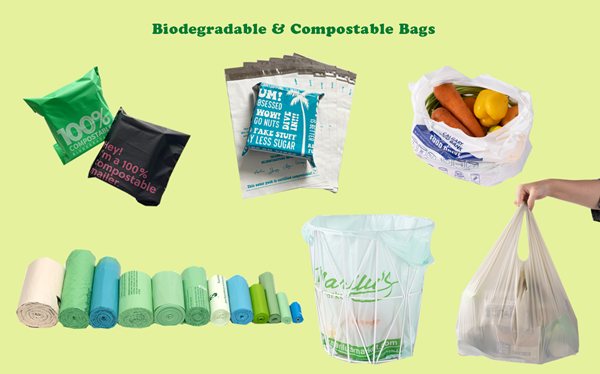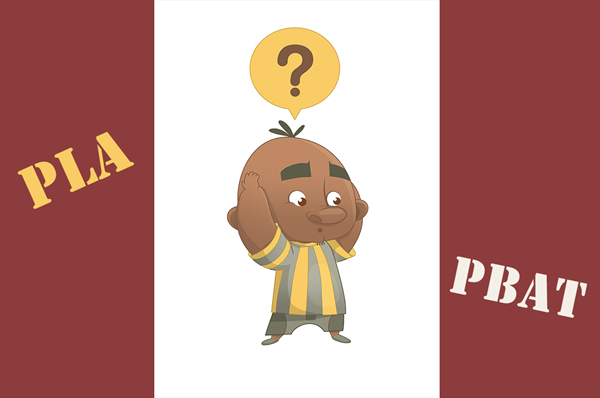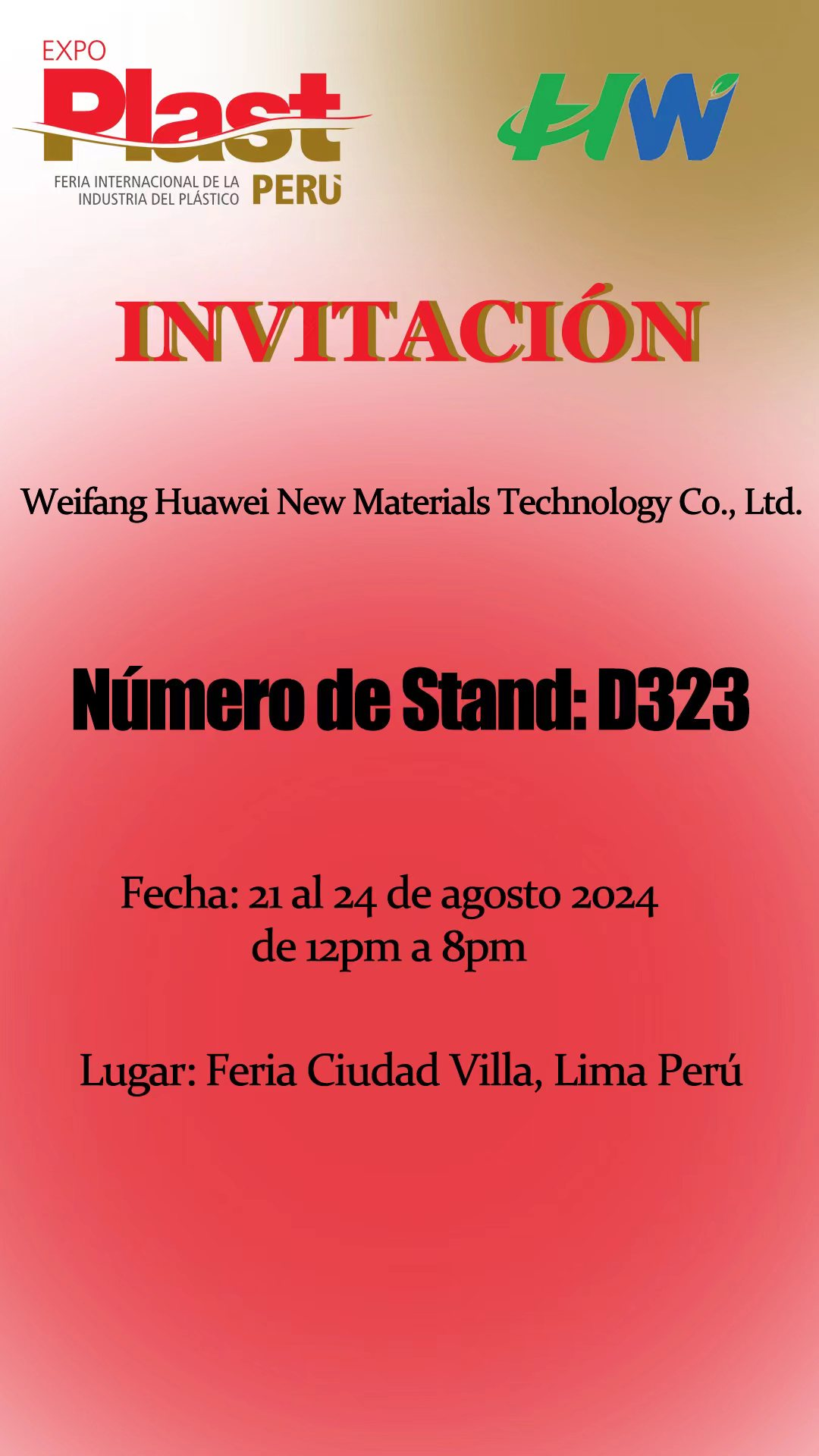To replacing conventional plastic, especially one-time-use plastic with degradable plastic materials is currently the major trend. More and more enterprises entered this industry with new innovative materials. In this article, we make a comparison of PLA and PBAT in terms their raw materials, performance, applications, production capacity and price.
1. What is PLA?
Raw materials:
Biodegradable plastic one: polylactic acid (PLA).
It is a new type of biodegradable material made from starch raw materials proposed by renewable plant resources such as corn. It has good biodegradability and can be completely degraded by microorganisms in nature after use, ultimately generating carbon dioxide and water without polluting the environment. This is very beneficial for environmental protection and is recognized as an environmentally friendly material. It is understood that the dosage of PLA accounts for 45.1% of biodegradable plastics, making it the undisputed main force.
The degradation of polylactic acid can be divided into two stages: (1) first, pure chemical hydrolysis into lactic acid monomers; (2) Lactic acid monomers degrade into carbon dioxide and water under the action of microorganisms. The food cup made of polylactic acid can be completely degraded in just 60 days, truly achieving dual ecological and economic effects.
Performance:
PLA has high modulus, high tensile strength and poor ductility, PLA is like PP in general plastics, which can be used in injection molding, extrusion, blow molding and blistering. PBAT is more like LDPE, which is suitable for film bag packaging.
PLA is a light yellow transparent solid with good thermal stability. The processing temperature is 170 ~ 230 ℃, and it has good solvent resistance. It can be processed in many ways, such as extrusion, spinning, biaxial drawing, injection blow molding. Similar to PP and similar to PS in transparency, pure PLA can not be used to directly prepare products. Although PLA has high strength and compression modulus, it is hard but poor in toughness, lack of flexibility and elasticity, easy to bend and deform, and poor in impact and tear resistance. PLA is usually modified before it can be used to prepare degradable products, such as disposable tableware, straw and so on.
Applications:
PLA modified materials are mostly used for disposable tableware, such as degradable lunch box, degradable straw and so on.

Production capacity:
For a long time, the PLA production capacity is slightly less than PBAT. Due to the large bottleneck of PLA production technology, the key raw material lactide has not made breakthrough progress, so the domestic PLA production capacity has not increased significantly, and the price of PLA raw materials is relatively expensive. A total of 16 PLA enterprises have been put into operation, under construction and planned. The production capacity that has been put into operation is 400000 T / A, which is mainly concentrated in countries out of China; the production capacity under construction is 490000 T / A, which is mainly in domestic China.
Prices:
Normally the price of PLA is higher than that of PBAT. However, due to the policy influence on membrane bag products, the supply of PBAT falls short of demand.
2. What is PBAT?
Raw materials
Biodegradable plastic one: PBAT poly
PBAT poly (butylene terephthalate adipate) is a kind of petrochemical-based biodegradable plastics, which comes from petrochemical industry. The main monomers are terephthalic acid, butylene glycol and adipic acid.
Performance
PBAT is a semi-crystalline polymer. The crystallization temperature is usually around 110 ℃, the melting point is about 130 ℃, and the density is between 1.18g/ml and 1.3g/ml. The crystallinity of PBAT is about 30% and the shore hardness is above 85. PBAT processing performance like LDPE, can use similar process for blowing film. The mechanical properties of PBA and PBT have good ductility, elongation at break, heat resistance and impact resistance. Therefore, PBAT is usually modified for degradation products, mainly to meet the performance requirements of products and reduce the cost.
Applications
At present, most of the applications of PBAT materials in the market are membrane bag products. PBAT modified materials are mostly used for blowing film and making bags, such as shopping bags. PBAT is often used in bags to add flexibility, fast biodegradability, and works to speed up the rate of compostability to comply with compost regulations. It is a necessary ingredient in the product. Additionally, it is quite safe for the environment because it does not leave behind any harmful toxic residue.

Production capacity
In contrast, in China, the raw materials for PBAT production are easy to obtain, the production technology is more mature, and the capacity of PBAT and the capacity under construction are more. However, due to the fluctuation of raw material BDO price, the differential energy release time of PBAT may be extended. At present, the price of PBAT is still cheaper than PLA. As shown in the table below, PBAT is currently under construction + planned according to the production capacity of phase I, plus the original production, there may be 2.141 million tons of production capacity in 2021.
Prices:
At the same time, the price of BDO monomer of PBAT rises sharply. At present, PBAT has almost caught up with the price of PLA. The price of PLA is relatively stable.
3. Why is PBAT added to PLA?

PLA is bio-based, while PBAT is fossil-based.
Although rheology data indicate a higher viscosity of PBAT than PLA at 180 °C, the addition of PBAT was found to increase the processability of PLA in extrusion. Barrel temperatures were set to a profile ranging from 150 to 180 °C during extrusion to reduce thermal impact and minimize polymer degradation.
Although PLA and PBAT have different performance, they can complement each other! PLA can supplement the stiffness of PBAT film, PBAT can improve the flexibility of PLA, and jointly complete the great cause of environmental protection.
